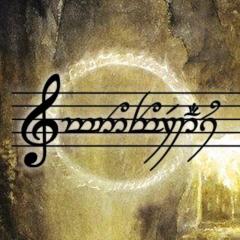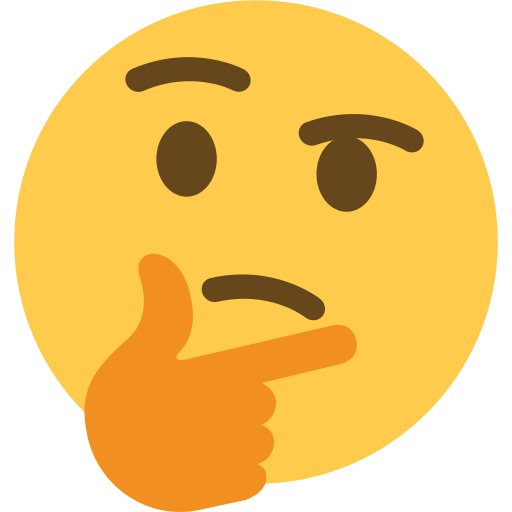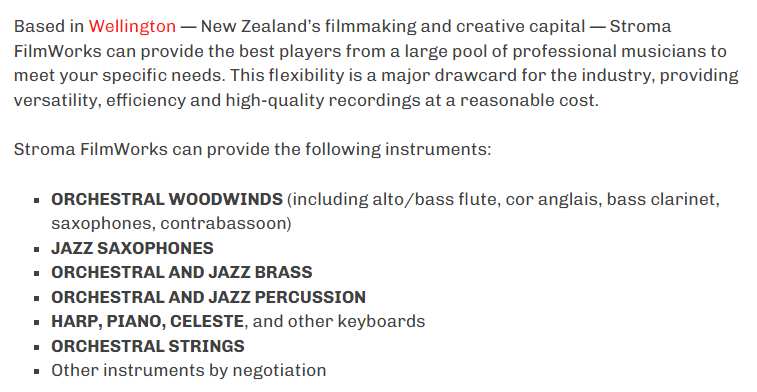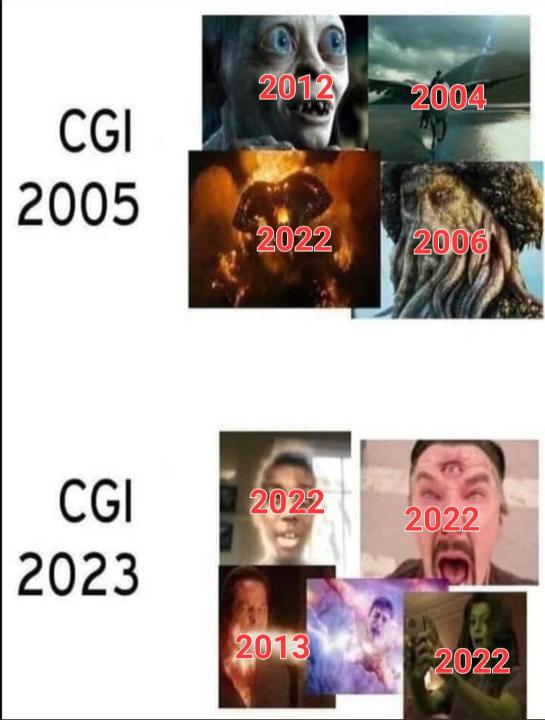-
Posts
383 -
Joined
-
Last visited
-
Days Won
1
Everything posted by Monoverantus
-
Eh, I think it's fine. Though I probably wouldn't make the same connections, it's a solidly argued fan-theory, and really at its core, a great lesson on chromatic mediants. It's far better than another video I've seen which tried to claim the highest note in the Weakness and Redemption theme is a chord note (making Rivendell's A major - F major chords into F augmented maj7 - Bb augmented maj7). Also, it's beautiful and I'm not at all envious of their video editing skills.
-
I don't think anyone's shared this interview, but I thought it had some nice trivia.
- 873 replies
-
- Howard Shore
- Tolkien
-
(and 1 more)
Tagged with:
-
So, now that Part 2 has been digitally released, I've rewatched it and have some thoughts. 1) The theme @MaxMovieMan calls "Fremen Chimes" appears twice in Part 2: 0:00 in The Sietch, and the unreleased track when Jessica leaves Paul to travel south. 2) The track Ornithopter Attack appears nowhere in the movie 3) The drum beat in Harkonnen Arena is in 7/4 (odd time signature just like Feyd Rautha's theme), while the beat under Kwisatz Haderach is in 4/4, so I'm not 100% that a thematic connection is implied. 4) The first 3 notes of Feyd Rautha's theme is a retrograde inversion of Paul's theme (The One) 5) There is no Seduction theme, it's just Feyd-Rautha's theme played in a high register on a harp or guitar 6) The Emperor's theme is played twice: 0:39 in The Emperor, and the unreleased track when the Emperor's guard humiliates the Baron.
-
I feel like I'm going crazy, I'm looking for a video clip where Hans describes how his aim with the Love theme was to go simpler. Anyone know what video I'm talking about?
-
The most striking aspect of the Dune movies to me is how tactile they are. I can feel the sand rippling on the dunes, the wind in my hair, the tremors through the ground. The sort of eyes-half-closed abstract visual of the title shots (that reappear as transition shots in Part 2) is something all of us recognize, but I don't think I've ever seen anyone try to visualize it. For this, I think it's very fitting with a similarly tactile score. It's not concerned with the intellect or complexity of scoring traditions, but with the visceral impact it can give. The House Atreides melody on bagpipe/electric guitar feels right, and the same theme on duduk over synth chords feels right, though it's a completely different context.
-
The Love theme is honestly far from the only one that is quite hard to categorize. I've seen people refer to at least 3 different themes as "Paul's theme"...
-

So, THIS is now a thing... (Anime Lord of the Rings prequel)
Monoverantus replied to Chen G.'s topic in Tolkien Central
Not improbable, but tbf they don't necessarily have to be center-stage instruments to define a specific culture. -

So, THIS is now a thing... (Anime Lord of the Rings prequel)
Monoverantus replied to Chen G.'s topic in Tolkien Central
Unsurprisingly, we're getting shawms too. https://www.instagram.com/p/C4fPZ8kMkCK/ -
Wow, this is invaluable work! I'm a bit late on the hype train, but I'm working on a video breaking down the thematic storytelling in HZ's Dune scores, and these lists have saved me a lot of time. I'd like to credit both you and @WampaRat when I'm done.
-

So, THIS is now a thing... (Anime Lord of the Rings prequel)
Monoverantus replied to Chen G.'s topic in Tolkien Central
Seems indeed like they're striping. They started with the winds, now they're doing strings. https://www.instagram.com/p/C4C4lQTrhbQ/ -

So, THIS is now a thing... (Anime Lord of the Rings prequel)
Monoverantus replied to Chen G.'s topic in Tolkien Central
Their own website doesn't give that impression: https://www.stroma.co.nz/home/uncategorised/about-stroma-filmworks -

So, THIS is now a thing... (Anime Lord of the Rings prequel)
Monoverantus replied to Chen G.'s topic in Tolkien Central
Ever the tease, this guy. Judging from the size of the bars, he's deliberately not showing the melody. -

So, THIS is now a thing... (Anime Lord of the Rings prequel)
Monoverantus replied to Chen G.'s topic in Tolkien Central
Ok, Boomer (sorry, I had to XD). I think the problem of women's representation in LotR (at least in the modern sense where it tends to be more about being independent than having a meaningful impact on the story) is that Éowyn is among the most memorable "badass female characters" in both film and literature, but she only works as a character if she's a rare exception. If you try to make Middle-earth more progressive (as in TRoP and the original draft of the PJ trilogy), it at best diminishes her accomplishments, and at worst makes it seem as if Middle-earth is socially regressing. Sure, give me more interesting and memorable female characters, but don't just give me Éowyn 2.0. -

The funny Middle-Earth related Pictures and Videos thread
Monoverantus replied to Marian Schedenig's topic in Tolkien Central
Well done for including one (1) movie that's actually from the year it's supposed to be then XD -

The funny Middle-Earth related Pictures and Videos thread
Monoverantus replied to Marian Schedenig's topic in Tolkien Central
Tbf I don't even necessarily disagree with the sentiment, but the examples picked are just laughably random (I don't know the bottom middle one). -

The funny Middle-Earth related Pictures and Videos thread
Monoverantus replied to Marian Schedenig's topic in Tolkien Central
-
Oh sure. In the crazier parts of the score everything's permitted. Any jazz musician would highlight diminshed chords' utility for modulation, but in LotR, Shore seems to mostly apply them in passing, as part of quite intuitive voice-leading. Consider the first 4 chords of the Lighting of the Beacons: Fm-Fdim-Fm-Db. It's literally just the top note moving down-and-up by halfsteps. A similar case is the morning of departure for the Rohirrim: Dm-Ddim-Dm-Bbm-Dm-Ddim-Dm. Or the final Wagner-tribute: E-D-E-F#dim, E-D-F#dim-E. The closeness of notes is clearly more important than any functional harmony.
-
Hehe, ok. To answer your question then, yes and no. The first chords are Em-Fm, which then continues up stepwise (Gm-Am-Bbm-Bm-Cm-Dbm). The whole destruction of Isengard segment is built around this incrementally rising motion, in both melody and chords, which takes inspiration from Nature's Reclamation's B Phrase. The A phrase is a lovely diatonic motif, while the B Phrase has this chromatically rising power stirring from below (F#dim-F#m-F#-Bm). Consider this moment, from when Pippin hits an Orc with a stone. It has the exact same "one-note-at-a-time" chord change (C#dim-C#m-C#-C#sus)
-
Not the least if we take the analysis one step further, and include Nature's Reclamation, which also uses the flat-sixth-apart chords, with the only change being that one is major and one is minor. On a sliding scale of diatonicism, you'd have: Nature's Reclamation (Am-F) = diatonic, natural, easy on the ear; unambiguously good Rivendell (A-F) = major-moded yet chromatic; beautiful yet still tinged with mystery and wonder Mt Doom (Am-Fm) = minor-moded and chromatic; unpleasant and foreboding All 3 have melodies associated with them that glide from the fifth to the flat sixth. Does this mean there must be a connection between these themes (or the TRoP track)? Not necessarily. It's clearly a compositional pattern that Shore is attached to, and it might just be that. It's harmless to point out that it's there and leaving it up for interpretation, but I'd personally avoid claiming something is or isn't intentional unless I have very good sources for it.
-
How is it possible to act so condescending in a discussion that you've added 0 new information to? The Mount Doom chords is personally my favorite subject of speculation. Other motifs are quite black and white (a rising perfect fifth can be a reference to Gondor, but will just as often not be). But the Mount Doom/Weakness and Redemption symbiosis is fascinating. Why? Well, Weakness and Redemption is an arpeggio ending with a flat sixth. Mount Doom is two chords a flat sixth apart. If ordered in levels of "backed by official information" it looks something like this: Level 1: The music played in "The Sword That Was Broken", "For Frodo" and "Mount Doom" is labelled the Mount Doom theme by Doug/Shore. The same chords are used in other themes, paired up with the Weakness and Redemption melody, in The Pity of Gollum, The Journey There, and Rivendell (in major). Level 2: Doug has pointed out several scenes where W & R appears on it's own, like in A Conspiracy Unmasked and The Plains of Rohan, without mentioning that the Mt Doom chords appear there as well. Level 3: There are scenes where W & R/Mt Doom chords appear that has never been pointed out, like in Gandalf the White and the end of The Tower of Cirith Ungol. Level 4: And finally there's plenty of scenes where the Mt Doom chords appear on their own, where their leitmotivic purpose is far more wobbly. Just like the chords from any other theme can spontaneously appear in isolation, so can they.
-

The Return Of The King COMPLETE RECORDINGS 4CD set
Monoverantus replied to sandman609's topic in Tolkien Central
Yup. Here's some other spots: Pippin seeing Mordor for the first time: https://youtu.be/8xN77SS0K74?list=PL733F0C1AF4943B8A&t=230 The reveal of the Witch-king: https://youtu.be/5lcf5EpOzRg?list=PL733F0C1AF4943B8A&t=221 Gollum manipulating Frodo to distrust Sam: https://youtu.be/h7NVvlqePQA?list=PL733F0C1AF4943B8A&t=99 Gollum and Frodo after Shelob's Lair: https://youtu.be/e8tGKpQxbzY?list=PL733F0C1AF4943B8A&t=400 Denethor putting Faramir on the pyre: https://youtu.be/xobG_sB7TRg?list=PL733F0C1AF4943B8A&t=38 The Mouth of Sauron: https://youtu.be/mHJDhwyIXpQ?list=PL733F0C1AF4943B8A I'm sure there are more I can't remember right now.- 646 replies
-
- Howard Shore
- Lord of the Rings
-
(and 1 more)
Tagged with:
-
I've watched a fair number of Charles Cornell videos, and to be fair, you can't deny his talent. That guy knows his way around the piano. I'd give one foot for his hands and the other for his ear. On the other hand, it's quite clear that he never does any research. People tell him "hey check out this amazing soundtrack", then he sits down and listens to 2-3 tracks and does that kind of surface-level reaction-type commentary. As opposed to similar music Youtubers like Sideways, Adam Neely, 12tone or 8-bit Music Theory, I always leave a Charles Cornell video wanting more. (Also, who did that Rohan Fanfare transcription in the thumbnail? )
- 873 replies
-
- Howard Shore
- Tolkien
-
(and 1 more)
Tagged with:













